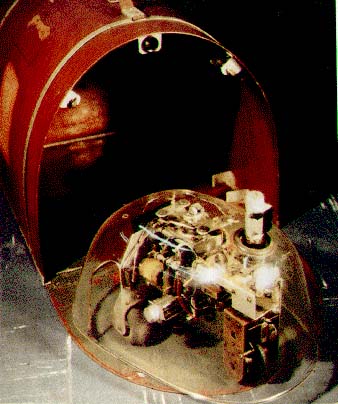

 W.
Grey Walter
W.
Grey WalterA respected neurophysiologist, Walter worked extensively with EEG. He discovered theta and delta waves in the electroencephalogram (the brain waves associated with light and deep sleep, respectively), and developed the first EEG brain topography machine, based on an array of spiral-scan CRTs connected to high-gain amplifiers.
 In
the late 1940's Dr Grey Walter carried out pioneering research on mobile
autonomous robots at the Burden Neurological Institute as part of his
quest to model brain function. He wanted to study the basis of simple
reflex actions and to test his theory on complex behavior arising from
neural interconnections. His highly successful and inspiring experiments
with robot "tortoises" "Elsie" and "Elmer" were influential in the birth
of the science of cybernetics, and widely read, as documented in "Scientific
American" in 1950 and 1951, and in his book "The Living Brain"
(1953). Recently, one of the original tortoises was found by Dr. Owen Holland,
of the University of West of England, and was restored to order in 1995.
A specimen of a second
generation turtle is in the collection of the Smithsonian Institution.
In
the late 1940's Dr Grey Walter carried out pioneering research on mobile
autonomous robots at the Burden Neurological Institute as part of his
quest to model brain function. He wanted to study the basis of simple
reflex actions and to test his theory on complex behavior arising from
neural interconnections. His highly successful and inspiring experiments
with robot "tortoises" "Elsie" and "Elmer" were influential in the birth
of the science of cybernetics, and widely read, as documented in "Scientific
American" in 1950 and 1951, and in his book "The Living Brain"
(1953). Recently, one of the original tortoises was found by Dr. Owen Holland,
of the University of West of England, and was restored to order in 1995.
A specimen of a second
generation turtle is in the collection of the Smithsonian Institution.
He married twice, and had two sons from the first and one from the second. According to his eldest son, Nicolas Walter, "he was politically on the left, a communist fellow-traveller before the Second World War and an anarchist sympathiser after it."
In 1970 Dr. Grey Walter was severely
injured in an automobile accident, dying seven years later without fully
recovering from it.